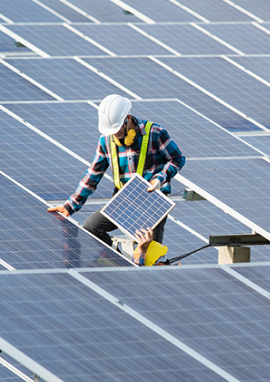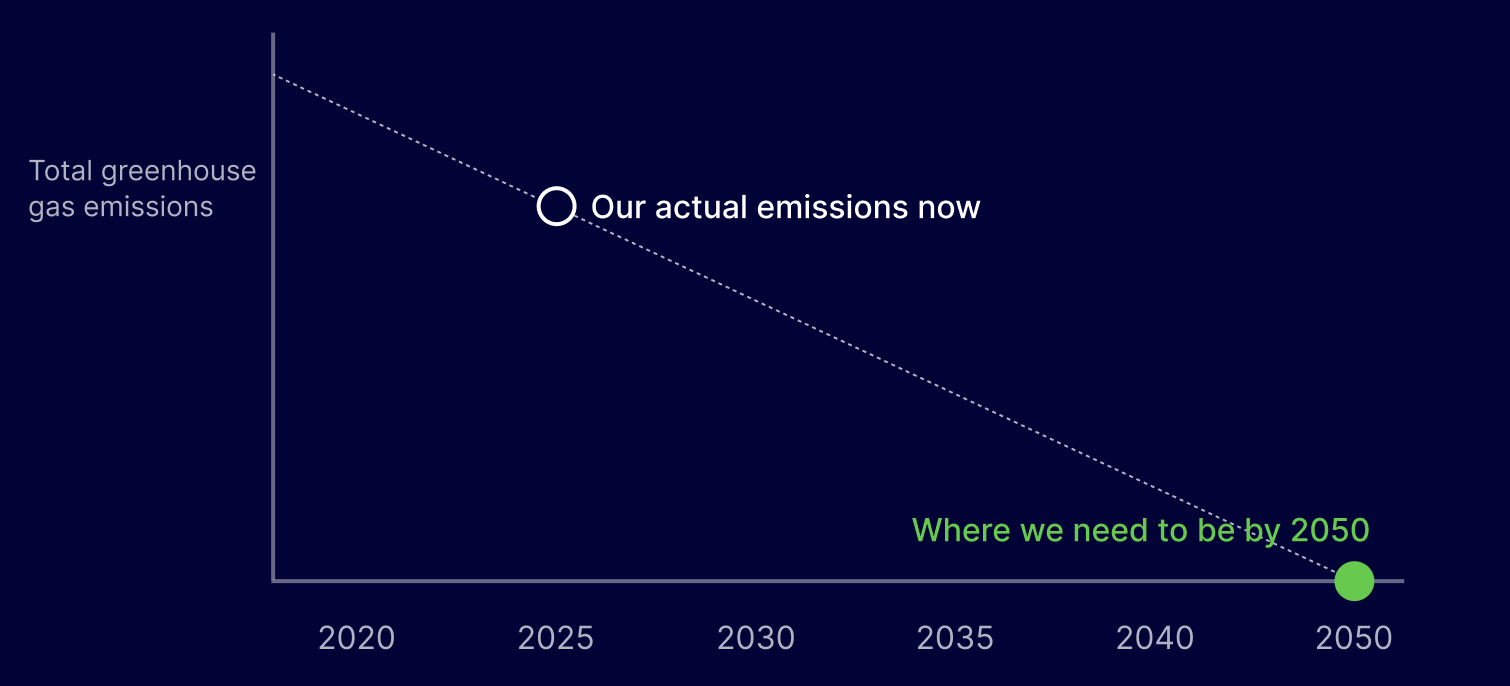Your ABC pension scheme
Your pension and climate change
YOUR ABC PENSION SCHEMEPension investments are affected by, and contribute to, climate change – we’ll explain how.
We’re making your investments better for the planet, which makes them better for your pension at the same time.
A sustainable pension is 21 times more effective at cutting carbon than stopping flying, going veggie, and switching energy supplier combined. That’s according to research by the campaign Make My Money Matter.
Better for your pension as well as the planet
We invest your pension to help it grow
We invest your pension money in companies, transport, buildings, and more, around the world.
Pension investments are affected by climate change
Take a shopping centre we invest in. Flooding, made more likely by climate change, could damage it. Droughts could destroy farmland that supplies food to supermarkets we invest in. These are risks that climate change poses.
As well as risks, there are potential benefits. To tackle climate change, we need clean energy, low-carbon tech companies, and more. Investing in companies that are well-positioned for the future helps your pension grow over the long term.
Pension investment emissions contribute to climate change
Most companies we invest your pension in create emissions. For example, a technology company that makes computers emits greenhouse gases as it makes each product. And it emits greenhouse gases as it lights and heats its factories and shops, and as its employees commute in and out of work.
So we’re working to reduce those investment emissions
Reducing emissions helps protect your investments from the risks of climate change, and benefit from the opportunities. It helps tackle climate change, while giving your money the best chance to grow for the future.
How we’re reducing our investments’ emissions:

Investing £500million in climate tech and clean energy
SunRiseAndShineCo builds some of the most efficient solar panels in the world.
OceanPlasticsCo sucks plastic from the sea and recycles it into benches, fences, furniture and decking.
These companies help tackle big challenges the world is facing – like the energy transition and protecting the oceans. So they’re well positioned to grow in the future, and give us a return on our investment.

Investing £400million in forestry and timberland
Our new investment in Scottish woodland helps restore and regenerate an area of the forest. Those trees capture carbon emissions from the air. And part of the forest is sustainably harvested for timber, to give us a return on our investment.

Using our investor influence to encourage the heavy polluters to change
We could just stop investing in companies that have high emissions. But this won’t solve the problem of climate change. It will just pass the problem on to the next person who invests in them.
Instead, we use our say. We vote at company meetings and work with their boards. We encourage them to reduce emissions, set climate targets, and improve how they treat the environment.
Our progress in numbers:
We’ve set a target to get to net zero emissions by 2050.
Reaching net zero means reducing emissions as much as possible. Any unavoidable emissions are cancelled out by removing greenhouse gases from the air, for example by planting trees. That way there’s zero emissions in total.
So far, we’re on track.

We measure our emissions every year
We report on them in our yearly climate change report, which we produce as part of the TCFD – the Taskforce for Climate-related Financial Disclosures. What you’re reading now is a snapshot of it. If you want to, you can read our full climate report.
Our carbon footprint
This measures our emissions intensity, which is the amount of greenhouse gas emissions per million pounds we invest. To reach net zero, our emissions intensity needs to reduce over time.
70 tonnes
of carbon dioxide equivalent per £million
68 tonnes
of carbon dioxide equivalent per £million
Our net zero alignment
This shows the percentage of companies we’re investing in that already have plans in place to be net zero by 2050. This figure should increase over time.
25%
125/500 companies we invest in
27%
135/500 companies we invest in
These numbers cover some but not all investment emissions.
They cover:
- emissions from a company’s day-to-day operations
- emissions from the energy a company pays for
But they do not cover:
- emissions from a company’s suppliers or supply chain
We are gathering supply chain emissions data, but it’s often unreliable. There’s more information about this, and how we continue to improve our emissions data, in our full TCFD report.